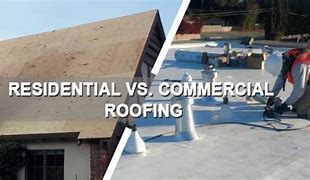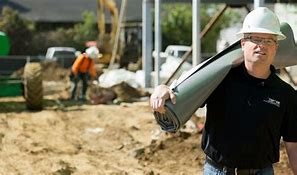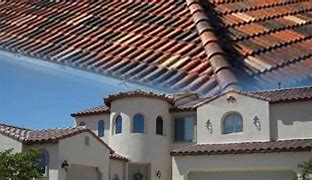The Difference between Commercial Roofing and Residential Roofing
It may seem like a roof is a roof. However, there is a difference between a residential roof and a commercial roof. Damage to either type of roof can be expensive and result in the loss of the value of property due to natural disasters. Both also require the use of quality materials and proper installation by professional roofing businesses in the industry. They will understand that residential and commercial roofs are not created equally. It is imperative to understand that these differences are the key to finding a high quality roofing system for each structure.
Roofing Materials
Roofing materials for residential and commercial roofs tend to vary depending on the type of the roof, weather conditions and cost. Typically a commercial roof has a flat slope and residential roofs tend to be steeper. It takes a qualified and professional roofing company to meet the demands for both and offer sound advice about the materials that work best for each kind of roof. Those with excellent reputations in providing quality roofing materials with skilled roofing technicians, for installation purposes, are in high demand.
Roofing Materials Utilized for Commercial and Residential Roofs
- Asphalt, Slate, Tile and Ceramic Shingles
- Wood Shakes
- Metal Roofing
- Solar Shingles
- Built-Up Roof

Construction of Residential and Commercial Roofs
Residential roofs are typically steep-slope and constructed primarily with asphalt, slate, or cedar shake shingles. Some homeowners opt for tile or metal shingles as well.
Commercial, industrial, and institutional roofs are typically flat roofs, which range from old-style built-up roofs to modified single-ply. Because of their flat surfaces, these types of roofs can often serve as locations for gardens or solar panels. Commercial roofs tend to be much larger than residential roofs, and special consideration is required for the weight of the mechanical equipment often located on them.
Commercial roofs are generally more expensive than residential roofs, in part because of overall square footage but also due to the specialized tools and equipment required for safe, high-quality commercial roof installation and maintenance.

The Maintenance
Commercial buildings cover larger square footage, so maintenance of the roofing is more demanding.
For example, you should keep the gutters clean at all times, especially during the fall and winter when debris may cause blockages.
Roof shingles or metal roofing may start to disintegrate with time and under harsh weather. You should do regular checkups to make sure everything is in place.
Residential roofs are easier to maintain because they’re smaller in size, but also easier to scan for damages. You can replace any broken shingles yourself and unblock the gutters when needed.

Installation
Ultimately, the slope and materials decide the installation process. A residential roof can be built within 2-3 days with the only obstacles for the roofers installing them being the chimney. A commercial roof, however, can take weeks to be constructed and assembled. This is because the roof is much bigger, the materials are more complex, and they will end up requiring more time and days in order to cure, glue, reinforce and so on. Commercial roofing is installed in layers of metal and insulation. Membrane roofing is installed using a combination of nails, heat welding and adhesives. A slight, calculated slope is necessary to avoid pooling water and allow rainwater to flow straight onto the gutters.
Skill level
Although all roof repairs require skilled and licensed professionals, they each come with their own unique sets of challenges. Residential roofing jobs can be difficult and dangerous due to the steep angle of the roof. Commercial roofs require roofers that are familiar with building around smoke stacks, air-flow systems, and external piping. Experienced and competent roofing companies are able to meet the demands for commercial and residential roofing requirements.
Other Factors
Commercial roofers must consider the function of the commercial building and the unique specifications that affect the roof’s construction, residential professionals must be informed about the particular needs of their clients. Obviously, both types of roofs must be constructed to withstand the climate of the area, but residential types tend to be constructed with an eye for aesthetic and commercial roofs with a mind on functionality.
Commercial roofs don’t have the same water shedding structure as residential roofs. This has to be done carefully, so that the roof is waterproof. Impermeable weather membranes are installed under a commercial roof’s surface to protect the structure. A low slope roof doesn’t have the same structural drainage as a steep slope roof, where gravity pulls water off the roof. Emergency roof repair is more common for commercial roofs because any flaw in their waterproofing can allow water damage to the structure.